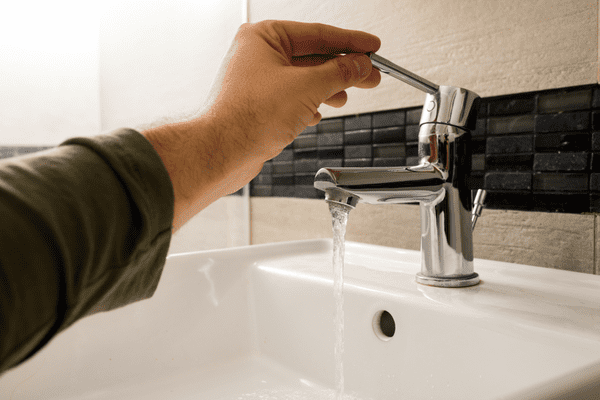How to Identify and Fix a Dripping Noise in Your Sink
View Count:142 CategoryBlog
A dripping noise coming from your sink can be more than just an annoyance; it might signal a deeper plumbing issue that, if left unattended, could lead to water waste, increased utility bills, and potential water damage. Thankfully, most causes of a dripping noise are relatively easy to diagnose and fix. In this post, we’ll explore common reasons why your sink might be making a dripping noise and provide step-by-step instructions on how to resolve these issues.
Understanding the Dripping Noise
Before diving into repairs, it’s essential to understand where the dripping noise is coming from. The sound can originate from various parts of your sink’s plumbing, including the faucet, pipes, or drain.
- Faucet Drips: This is the most common source of dripping noises. A faucet drip typically occurs due to worn-out components like washers, O-rings, or cartridges.
- Pipe Leaks: A dripping noise can also come from the pipes underneath your sink if they’re leaking due to loose connections or corrosion.
- Drain Issues: Sometimes, the noise might come from the drain itself, usually caused by water not draining properly or leaks in the drain assembly.
Step-by-Step Guide to Fixing a Dripping Faucet
If you suspect the dripping noise is coming from the faucet, it’s often due to a worn-out part. Here’s how to fix it:
- Identify Your Faucet Type: The first step is to determine what kind of faucet you have—compression, ball, cartridge, or ceramic disc. Each type has different components that might wear out.
- Turn Off the Water Supply: Before you start, turn off the water supply to the faucet. You can usually find the shut-off valves under the sink.
- Disassemble the Faucet: Use a wrench or screwdriver to remove the handle and access the internal components. Be sure to cover the sink drain with a cloth to prevent any small parts from falling in.
- Inspect and Replace Worn Parts: Look for worn-out washers, O-rings, or cartridges. These parts can usually be found at your local hardware store and are inexpensive to replace. Make sure to take the old part with you to ensure you get the correct replacement.
- Reassemble the Faucet: After replacing the worn-out parts, reassemble the faucet, turn on the water supply, and test the faucet to see if the dripping noise has stopped.
Fixing Pipe Leaks
If the dripping noise seems to be coming from under the sink, you might have a pipe leak. Here’s how to address it:
- Inspect for Visible Leaks: Use a flashlight to inspect the pipes under the sink. Look for signs of water droplets, corrosion, or wet spots on the cabinet floor.
- Tighten Loose Connections: Often, leaks occur because pipe connections have become loose over time. Use a wrench to tighten any loose nuts or fittings.
- Replace Damaged Sections: If you find a section of pipe that’s corroded or damaged, you may need to replace it. This can involve cutting out the damaged section and replacing it with a new pipe, which is best left to those comfortable with plumbing repairs.
- Apply Plumber’s Tape: For minor leaks, applying plumber’s tape to threaded connections can help create a better seal and stop the dripping noise.
Resolving Drain Issues
If the dripping noise comes from the drain, the problem might be related to improper drainage or leaks in the drain assembly.
- Check the P-Trap: The P-trap is the curved section of pipe under your sink that holds water to prevent sewer gases from entering your home. If it’s not installed correctly or has become loose, it can cause a dripping noise. Tighten any loose connections.
- Clear Clogs: A partially clogged drain can cause water to drain slowly, creating a dripping noise as water moves through the pipes. Use a plunger or a drain snake to clear any blockages.
- Inspect the Sink Flange: The sink flange, which connects the sink to the drain pipe, can sometimes leak if not properly sealed. You can fix this by applying plumber’s putty or replacing the flange.
Preventative Measures
To prevent future dripping noises and leaks, consider these maintenance tips:
- Regular Inspections: Periodically check your faucets, pipes, and drains for signs of wear or leaks. Catching these issues early can prevent more significant problems down the line.
- Replace Worn-Out Parts Promptly: If you notice any components wearing out, replace them immediately to prevent leaks.
- Avoid Harsh Chemicals: Using harsh chemical drain cleaners can damage your pipes over time. Instead, use a plunger or a natural drain cleaner made from baking soda and vinegar.
When to Call a Professional
While many dripping noises and leaks can be fixed with basic DIY skills, some situations require professional help. If you’ve tried the above steps and still hear a dripping noise, or if you’re uncomfortable performing any of these repairs, it’s best to call a plumber. Additionally, if you notice water damage, mold, or other signs of a significant leak, a professional assessment is essential.
Conclusion
A dripping noise in your sink is more than just a minor annoyance—it can indicate a more serious plumbing issue. By understanding the common causes and taking steps to fix them, you can prevent potential water damage, save on utility bills, and maintain a quiet, leak-free sink. Remember to perform regular maintenance and inspections to keep your plumbing in good condition and consider professional help if the problem persists.
By following these guidelines, you can ensure that a dripping sink doesn’t disrupt your peace or your home’s plumbing system.
 Faucet Online
Faucet Online


您好!Sign In